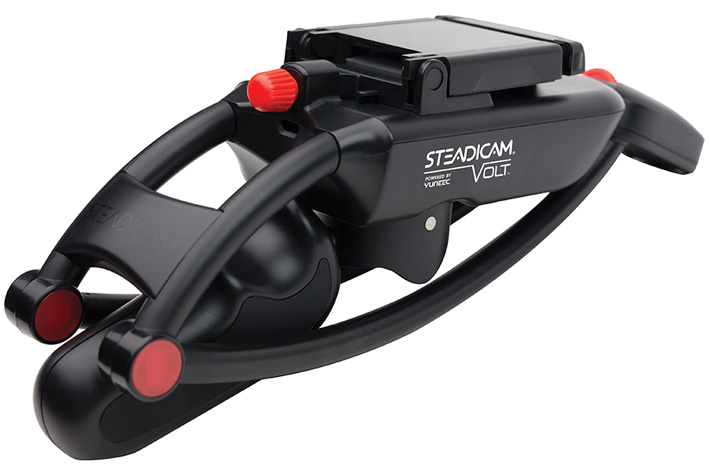
Steadicam, creators of the Academy Award Winning Steadicam Stabilizing technology, are back with a Steadicam to put in the palm of your hand.
Yes, Steadicam is back, offering filmmakers the ability to capture smooth and shake free video, only this time the system is designed so you too will have the ability to capture memorable moments professionally… and right from your smartphone! Steadicam, a division of Tiffen, announced the project in November 2016, suggesting that the product would soon be released, but the Volt will only be available this Summer.
Awarded with an Innovation Award at the CES 2017 Innovation Awards, the Steadicam Volt is on Kickstarter since January 5, with a campaign that had an initial goal of $100,000 but has pledged more than $550,000 from over 3,200 backers by the end of January. The campaign ends March 6, 2017, but as of now the project is already completely funded and the usual stretch goals are showing up.
The next is a GoPro adapter for the Steadicam Volt, which will be unlocked when the campaign hits $600,000, a goal that is not so far and is perfectly achievable. Initially planned to be an add-on item, the adapter will be, after all, distributed to every backer when the Volt ships this June! The base cost to back up the project and receive one Steadicam Volt is $139 (excluding duties, taxes and VAT that may be added in accordance with your local regulations).
Steadicam promises to introduce more surprises if the numbers continue to grow, but for now what we’ve is this Steadicam Volt, which Garret Brown, inventor of the original Steadicam, says “works fantastically well – it weighs only a pound but feels as inert as a full-size steadicam”.
Engineered to provide the utmost precision and control, the Steadicam Volt will enable smartphone users to capture high quality video content with ease. Additionally, the simulated feeling of inertia on the pan axis will improve the overall handing of the gimbal, giving users the stability they need to film with remarkable precision.
Featuring a lightweight and folding design, which enables easy storage and transportation, the Volt uses long life rechargeable Lithium Ion batteries, able to run for 8 hours, but continues to work, in manual mode, even when batteries are depleted. With dual operating modes for beginners and experienced users, the Volt accommodates phone sizes with or without case from 100 – 250g in weight and 58 to 80mm wide, and as expected is Bluetooth enabled. It is distributed with iOS & Android APP allows for precise balance and tuning.
Because it looks like a 3-axis gimbal, it is easy to think it works the same way, but the Steadicam Volt is different, says the company. While Steadicam Volt and DJI Osmo Mobile allow for electronic stabilization, the Steadicam Volt gives you agile precision movement and a true human experience when operating, compared to the DJI Osmo Mobile and all other 3-axis gimbals, which makes slow robotic movement relying on software for the framing.”
Steadicam says that users will notice an example of this in the video where the Osmo lags when panning and adds that “our patent pending technology that allows for this responsiveness will only be available in the Steadicam Volt.”
